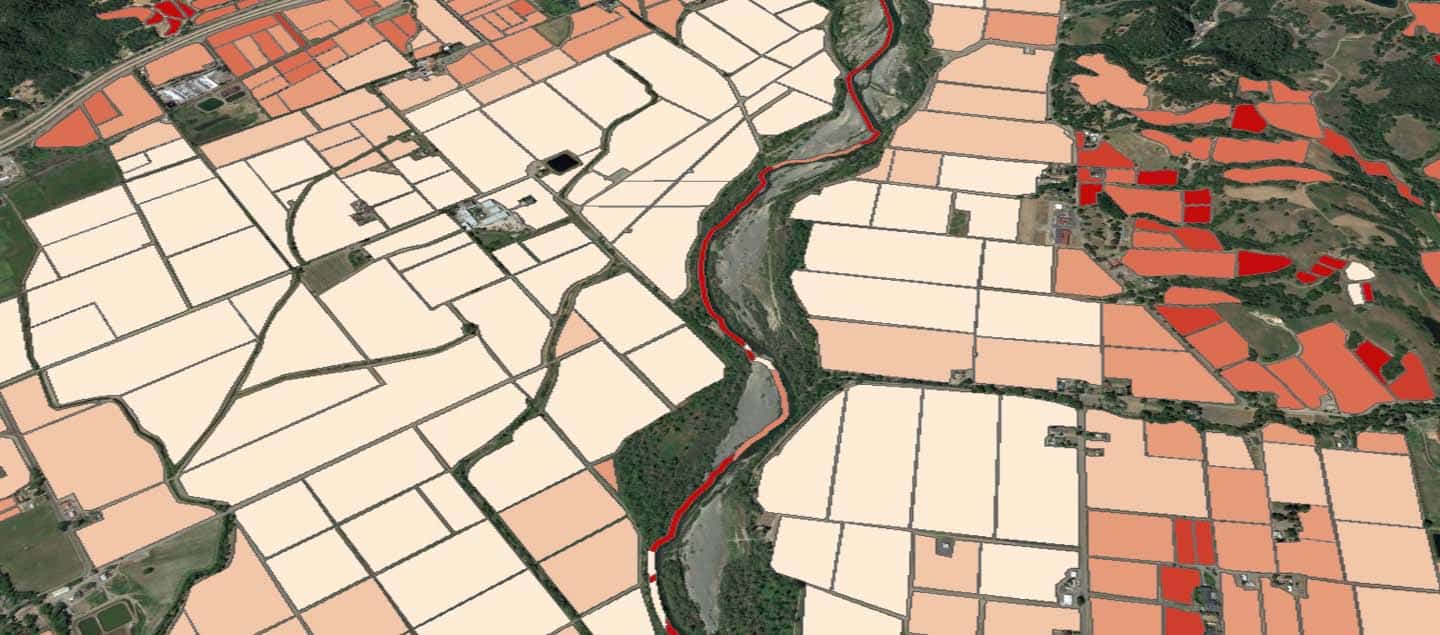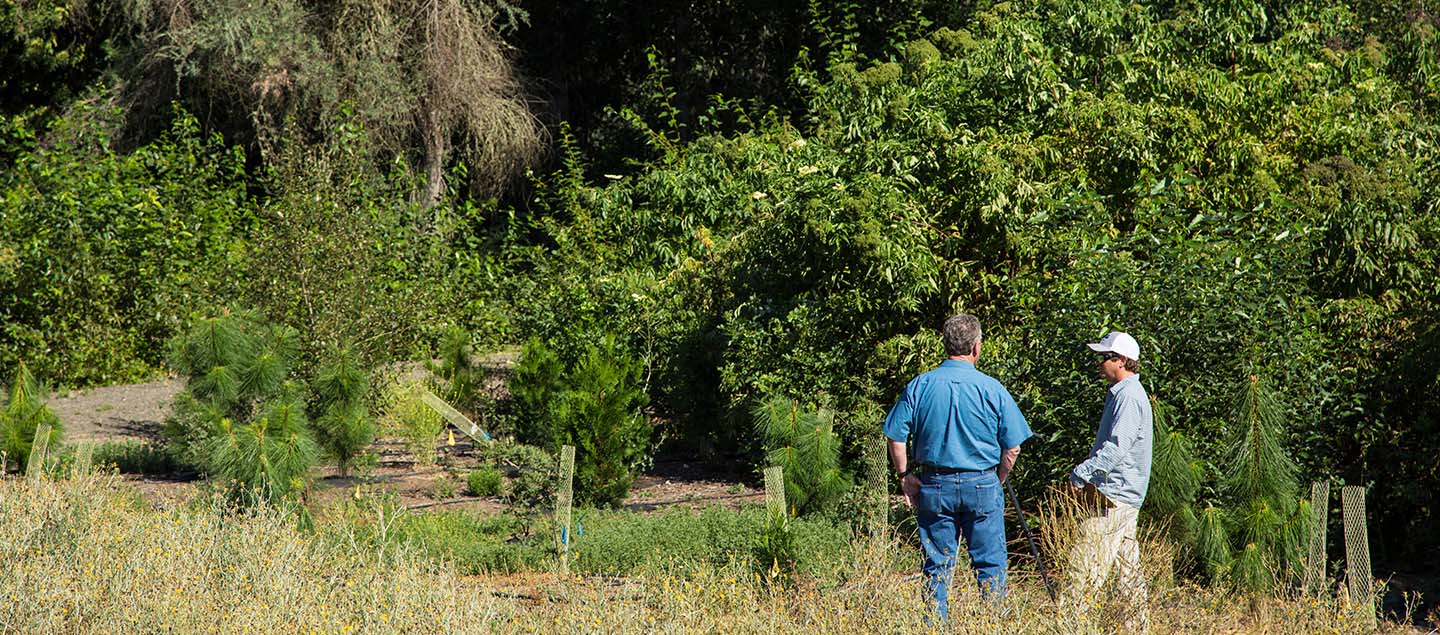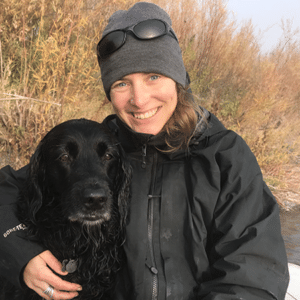Driven by data. Inspired through insight.
In this article of Streamside, Swanson explains how the organization has come to use data-driven solutions to protect and restore freshwater ecosystems.
You may not expect …
words like economics, science, technology, analytics, tools and insight from a traditional environmental nonprofit.
So how did the first wild fish conservation group in the Pacific Northwest infuse them into not only a vocabulary, but a mission to protect and restore freshwater?
We changed as the world changed.
The 21st century allows for data to be collected on our every action and used by a multitude of sectors to best direct effort and resources. The Freshwater Trust understood a failure to do the same for water was more than a missed opportunity.
Of the 71% of water on Earth, less than 2% is fresh and accessible. The demands being placed on this nonrenewable, scarce resource are intense and only growing. By 2050, nearly 9.6 billion people and every economic sector will soon be relying on the same waning resource.
If the problem is that powerful and pervasive, the solutions must be equally powerful, holistic, and integrated.
In the early 2000s, we realized how existing data and new technology could be harnessed and applied to inefficiencies and hindrances made intimately familiar to us after decades in conservation.
Not surprisingly, pictures of our water problems were sharpened. More strategic, targeted solutions were made real. It was evident that a viable plan for solving the freshwater crisis nationwide could not be written or executed upon in the absence of harnessing data and insight. We acted accordingly.
Data vs. Insight
To understand these two, know this: They are inexorably linked. One isn’t meaningful or actionable without the other.
Our work at The Freshwater Trust is to bridge them.
Data are facts. Measurements. Individual pieces of information. As President Joe Whitworth writes in his book, “Quantified,” humans create 2.5 quintillion new bytes of data every single day. If each byte were a penny, that’s enough pennies to cover the surface of the Earth five times over.
Yet on their own, these data don’t say much.
Through analysis, we can translate this information to insight. And with insight, we can make informed decisions on how to best improve our freshwater ecosystems.
Insight in practice
Between 2012 and 2015, The Freshwater Trust developed BasinScout. This is a mapping and prioritization methodology that takes sets of publicly available data in a river basin, aggregates them, and discerns where restoration and conservation actions will have the greatest impact.
Data points such as streamside vegetation, solar radiation, slope of the land, soil type, type of crop grown, water usage, and number of livestock raised are the inputs. The output is a map of a basin where land is color-coded as high, medium, or low priority.

BasinScout color codes agricultural fields and riparian (streamside) areas. The darkest sections are where we have the best chance of making an impact.
The highest priority areas are identified as the places with the most potential to have an impact on water quality or quantity while also being cost efficient. It’s a roadmap that says, “Go forth with restoration here. This is where you have the best chance of making a difference for the watershed.”
Data? Meet insight.
Actionable insight, actually.
This approach was used to spotlight the dozen landowners out of hundreds best to work with to plant trees along the Rogue River. The more than 50,000 trees planted to date generate shade and offset the warm water being discharged into the river by the wastewater treatment facility.
Our ability to see and propose this natural solution, understanding its scope and potential costs, meant the city of Medford chose planting trees over building a cooling tower or holding pond, options that were significantly more expensive, with the financial burden falling on taxpayers, and wouldn’t yield the same watershed-scale benefits.

Out of hundreds of landowners in the Rogue River Basin, BasinScout identified the dozen best to contract with for tree planting. To date, more than 50,000 trees and shrubs have been planted along the river, cooling the water and helping the city of Medford meet its temperature obligations under the Clean Water Act.
This same insight led Idaho Power Company to have confidence in The Freshwater Trust to develop a holistic, watershed-scale restoration program that could mitigate the temperature impacts of their Hells Canyon Dam Complex. A large-scale program that restores habitat and ecological function for miles of river was preferred, compared to a structural cooling tower at the dam.
The Snake River Stewardship Program will be among the largest restoration projects implemented in the Pacific Northwest, made possible only through new tools and thinking.
More feet on this path
A decade ago, sorting through millions of acres to find the highest priorities for action and seeing the problems of an entire watershed clearly wouldn’t have been possible.
Even so, a long road lies ahead.
Nearly $38 billion is spent annually on freshwater health and restoration, and yet more than half our nation’s rivers are impaired. While tools and technologies for smarter, more efficient conservation and restoration exist, they haven’t been adopted at the scale required to match the vastness and severity of the problems in front of us.
We’re not a technology firm or a Silicon Valley startup.
But we are a nonprofit carrying out a mission to protect and restore freshwater ecosystems in the 21st century – blazing a trail for a new era of conservation and welcoming more feet on it.
January 24, 2017#BasinScout #blog #data #environmental blog #freshwater ecosystems #Idaho Power Company #insight #Joe Whitworth #mapping #Medford Oregon #Restoration #Snake River #Streamside #watersheds
Enjoying Streamside?
This is a space of insight and commentary on how people, business, data and technology shape and impact the world of water. Subscribe and stay up-to-date.
Subscribe- Year in Review: 2023 Highlights
By Ben Wyatt - Report: Leveraging Analytics & Funding for Restoration
By Joe Whitworth - Report: Transparency & Transformational Change
By Joe Whitworth - On-the-Ground Action – Made Possible By You
By Haley Walker - A Report Representing Momentum
By Joe Whitworth

